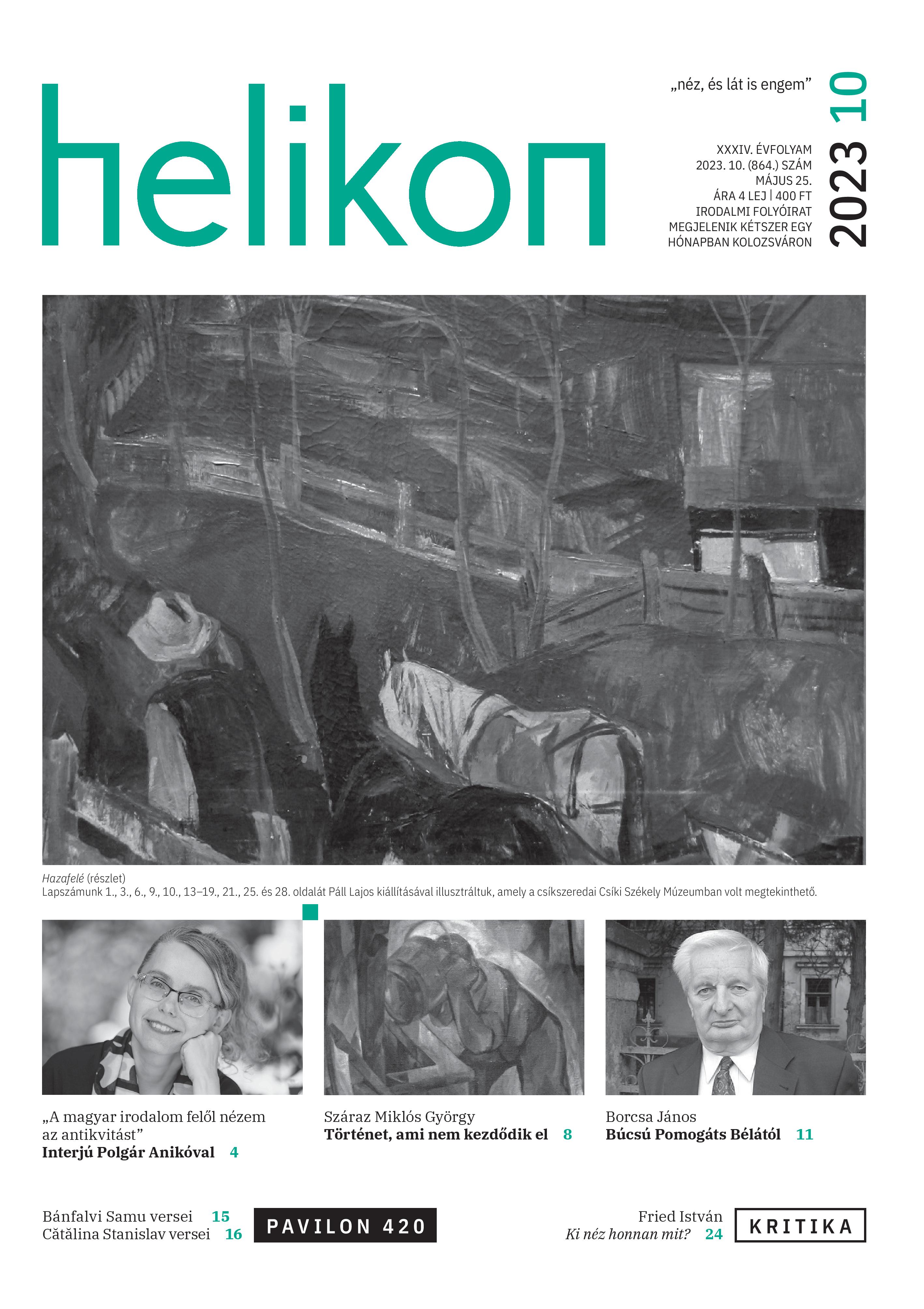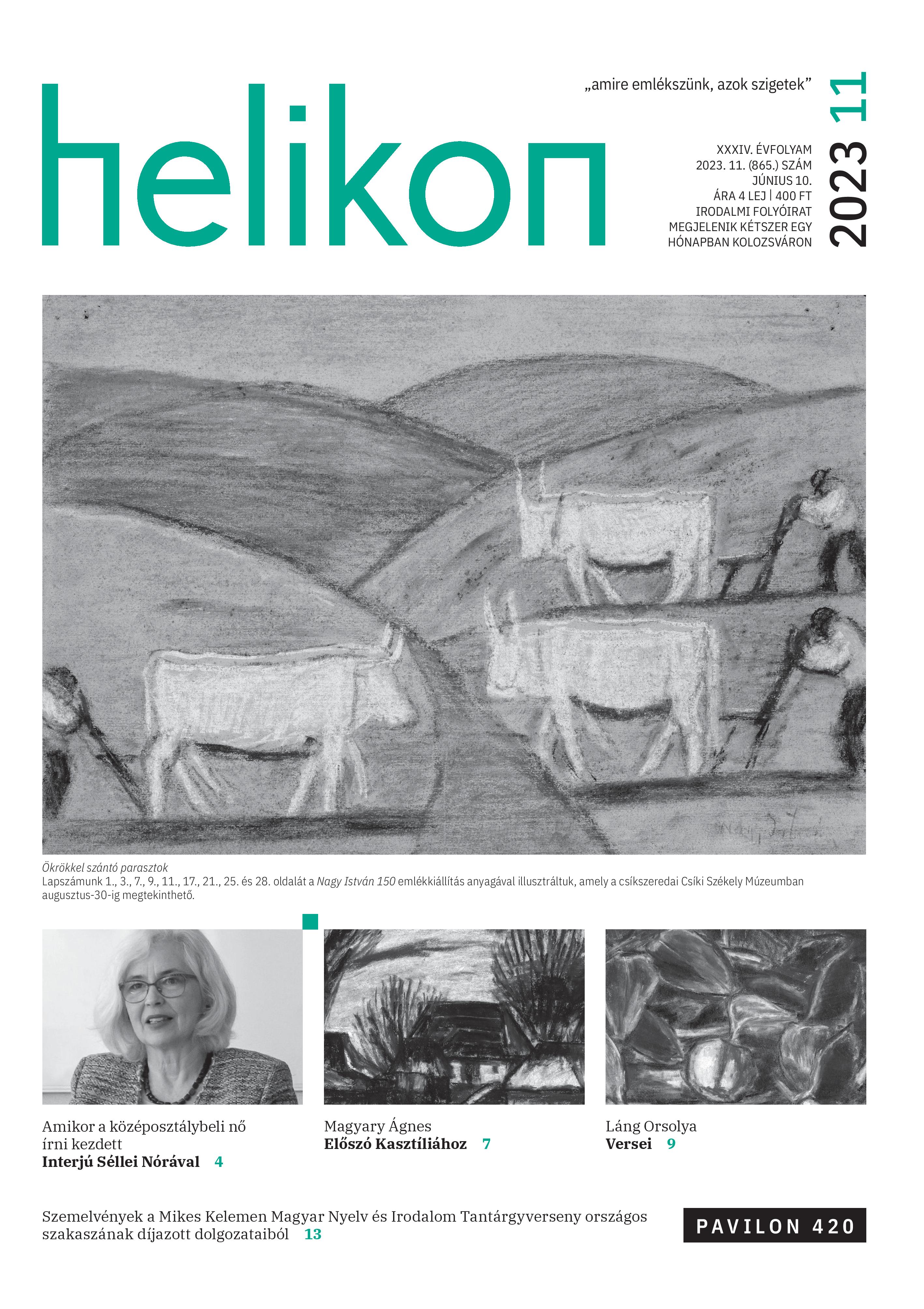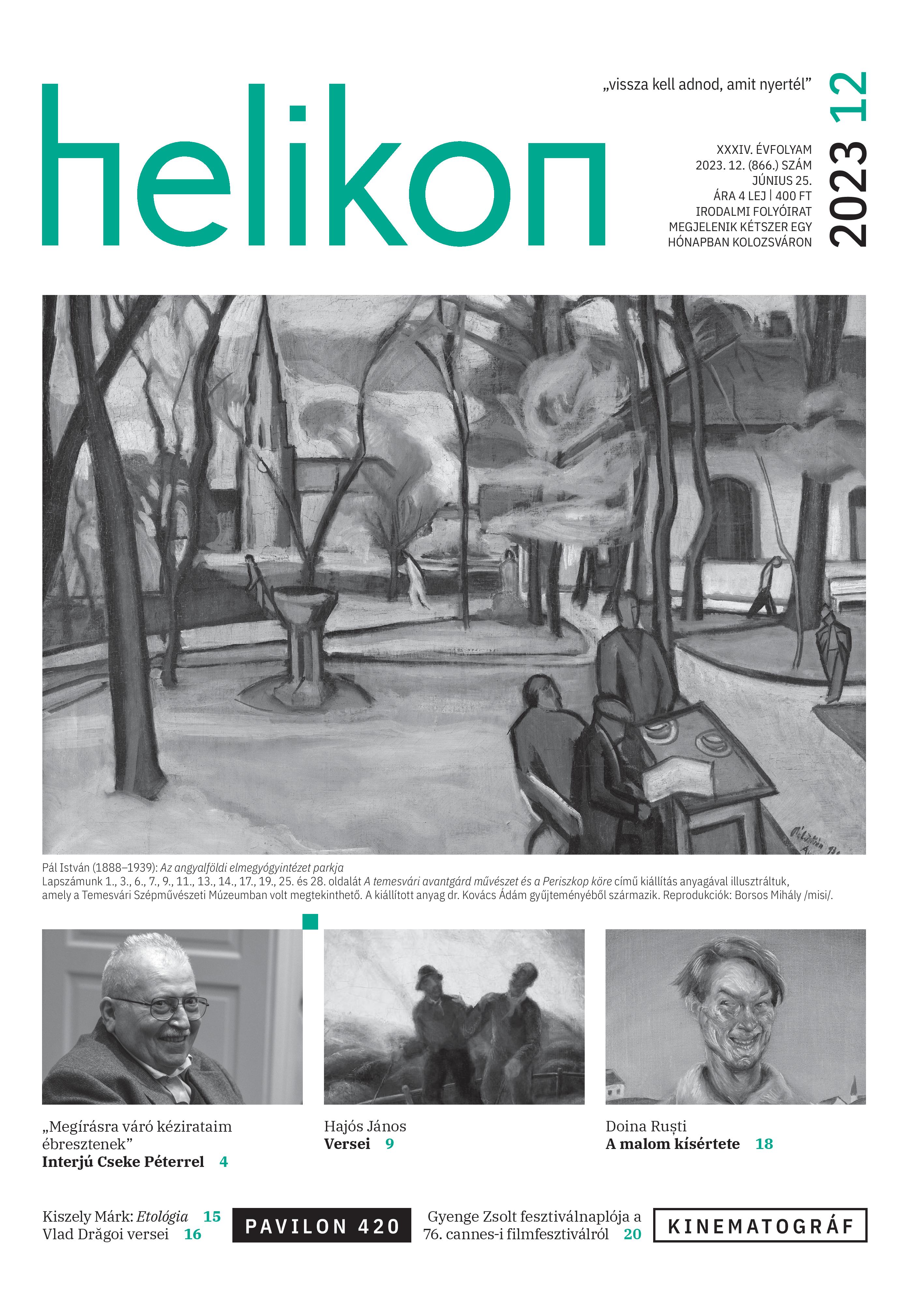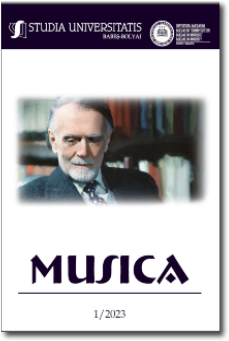
A név kátyú, vaddisznódagonya, omladék, szerelem – 33.
A series of short stories by Imre Wirth.
More...We kindly inform you that, as long as the subject affiliation of our 300.000+ articles is in progress, you might get unsufficient or no results on your third level or second level search. In this case, please broaden your search criteria.

A series of short stories by Imre Wirth.
More...

The writer Noémi Kiss shows us around such regions, neighborhoods and cities that were once widely known, played an important role in the history of our part of Europe and which nowadays are somewhat forgotten or far away (literally and metaphorically) to an average European person, sometimes even seem exotic. In my paper I would like to show the image of these places, cultures and inhabitants, as it is depicted in the work of Kiss. I will also try to find the answer to the question why these places could have been forgotten.
More...






Fragment from the Novel "Rocky" by János Lackfi.
More...
Review of: Az Országút Antológiája ’20–’21. Magyar Szemle Könyvek, Budapest, 2022
More...
Review of: Sófalvi Emese: Zeneoktatás a kolozsvári Muzsikai Conservatoriumban 1819–1869 között. Erdélyi Múzeum-Egyesület, Kolozsvár, 2020.
More...
A series of short stories by Imre Wirth.
More...

Essay by Péter Cseke on the works of Géza Páskándi.
More...



Sándor Weöres was a significant experimental artist in Hungarian poetry, who often perceived the tonal elements of the Hungarian language as melodies. The musicality of his texts, the rhythmic play of his words finds artistic form in his verses. Zoltán Kodály followed the poet’s poems with 4 4 and literary theory and Sándor Weöres’s affinity for music encouraged a creative-artistic dialogue between the two, which provided the space for a number of masterpieces for both children and adult audience. In our paper, we will look for language-music (text-melody) analogies in Kodály’s works composed to Weöres’ poems.
More...
Zoltán Kodály’s publication titled Férfikarok (Male Choruses) is a truly diverse collection: in addition to the composer’s works in the genre, one can find folk song arrangements, religious pieces, compositions inspired by historical events and even transcriptions, of various lengths and levels of difficulty. It is common knowledge that Kodály was not fond of exclusively male ensembles, being rather uninterested by male voice choirs and indeed his opinion was that these choral societies should be converted into mixed choirs. However, after travelling extensively in the country – thus gaining insight into the operation of these groups – he began to contribute to the genre’s repertoire. The composer began to view the case differently, as he thought that amateur male choirs – of which there were still many in the 1930s – should rather sing compositions of a higher value, as opposed to pieces of the Liedertafel-style. At the same time, the Férfikarok collection contains many pieces that are not suitable for amateur ensembles due to their challenging nature in terms of intonation and tone production. In this paper – in addition to presenting the volume – I intend to introduce a certain way of categorization based on the compositions’ level of difficulty, through an analytical approach, which may be of help to those who work with such ensembles that are rare, but worthy of appreciation.
More...